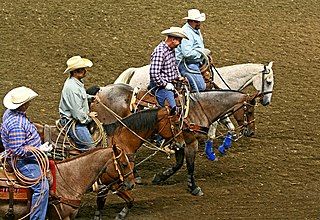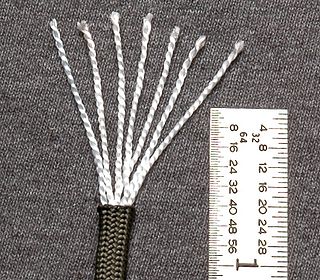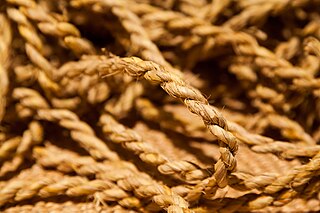 W
WA rope is a group of yarns, plies, fibers or strands that are twisted or braided together into a larger and stronger form. Ropes have tensile strength and so can be used for dragging and lifting. Rope is thicker and stronger than similarly constructed cord, string, and twine.
 W
WArthur Beale is a yacht-chandler that stocks a wide variety of nautical equipment and accessories. The business started as the rope-maker John Buckingham by the nearby Fleet river in the 16th century and was based in premises in Bloomsbury until 2021. In the 19th century, they became known as the exclusive suppliers of climbing rope to the Alpine Club. They still make and stock a large variety of ropes and lines and so also supply theatrical rigging and ornamental ropes for decoration and crowd control. In 2021, following the Covid-19 pandemic, they announced that they would be moving the business online but with plans for a new retail location or format such as a Christmas pop-up shop.
 W
WA dynamic rope is a specially constructed, somewhat elastic rope used primarily in rock climbing, ice climbing, and mountaineering. This elasticity, or stretch, is the property that makes the rope dynamic—in contrast to a static rope that has only slight elongation under load. Greater elasticity allows a dynamic rope to more slowly absorb the energy of a sudden load, such from arresting a climber's fall, by reducing the peak force on the rope and thus the probability of the rope's catastrophic failure. A kernmantle rope is the most common type of dynamic rope now used. Since 1945, nylon has, because of its superior durability and strength, replaced all natural materials in climbing rope.
 W
WA lasso, also called lariat, riata, or reata, is a loop of rope designed as a restraint to be thrown around a target and tightened when pulled. It is a well-known tool of the Spanish and Mexican cowboy, then adopted by the cowboys of the United States. The word is also a verb; to lasso is to throw the loop of rope around something. Although the tool has several proper names, such terms are rarely employed by those who actually use it; nearly all cowboys in the U.S simply call it a "rope," and the use of such "roping".
 W
WThe Lasso of Truth is a weapon wielded by DC Comics superhero Wonder Woman, Princess Diana of Themyscira. It is also known as the Lariat of Truth, the Magic Lasso, the Lasso of Hestia or the Golden Prefect. It was created by William Moulton Marston, inventor of the lie detector, as an allegory for feminine charm, but it later became more popular as a device to extract truth from people.
 W
WParachute cord is a lightweight nylon kernmantle rope originally used in the suspension lines of parachutes. This cord is now used as a general purpose utility cord. This versatile cord was used by astronauts during the 82nd Space Shuttle mission to repair the Hubble Space Telescope.
 W
WRope splicing in ropework is the forming of a semi-permanent joint between two ropes or two parts of the same rope by partly untwisting and then interweaving their strands. Splices can be used to form a stopper at the end of a line, to form a loop or an eye in a rope, or for joining two ropes together. Splices are preferred to knotted rope, since while a knot typically reduces the strength by 20–40%, a splice is capable of attaining a rope's full strength. However, splicing usually results in a thickening of the line and, if subsequently removed, leaves a distortion of the rope. Most types of splices are used on 3-strand rope, but some can be done on 12-strand or greater single-braided rope, as well as most double braids. While a spliced 3-strand rope's strands are interwoven to create the splice, a braided rope's splice is constructed by simply pulling the rope into its jacket.
 W
WRope-dancing is the general art and act of performing on or with a rope.
 W
WSaekki is a rope made of woven straw. It was an important household item used in pre-modern agricultural Korea.
 W
WA static rope is a low-elongation rope that is designed to stretch minimally when placed under load, typically less than 5%. In contrast, a dynamic rope is designed to stretch up to 40%. Static ropes have a wide variety of uses, for instance in fire rescue operations and caving.
 W
WA towing sock or wire rope puller is a device that connects to the end of a cable, such as a power cable, in order to pull it through a tube or tunnel. It works by tightening around the cable when pulled, in the same manner as a Chinese finger trap. The towing sock is tubular and made of braided cable, open at one end and closed at the other where it connects to a tow line using an eye splice.
 W
WWire rope is several strands of metal wire twisted into a helix forming a composite rope, in a pattern known as laid rope. Larger diameter wire rope consists of multiple strands of such laid rope in a pattern known as cable laid.
 W
WWire rope spooling technology is the technology to prevent wire rope getting snagged when spooled, especially in multiple layers on a drum.